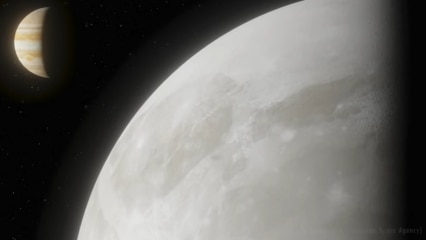
The latest findings by NASA’s Hubble Space Telescope showed the first evidence of water vapour in the atmosphere of Jupiter’s moon, Ganymede.
The water vapor forms when ice from the moon’s surface turns from solid to gas, a process that is called sublimation. According to NASA, scientists found that water vapour exists in the atmosphere of Ganymede, the largest moon in the solar system, using a combination of new and archival observations from Hubble.
According to previous studies, it was concluded that Ganymede contains more water than all of Earth’s oceans, even though the moon is 2.4 smaller than our planet. But, as the temperature in Ganymede remains extremely cold, studies had said the water on the surface may be frozen.
Scientists had speculated that the liquid ocean may “would reside roughly 100 miles below the crust; therefore, the water vapor would not represent the evaporation of this ocean.”
The evidence of water vapour in the solar system’s largest moon…















